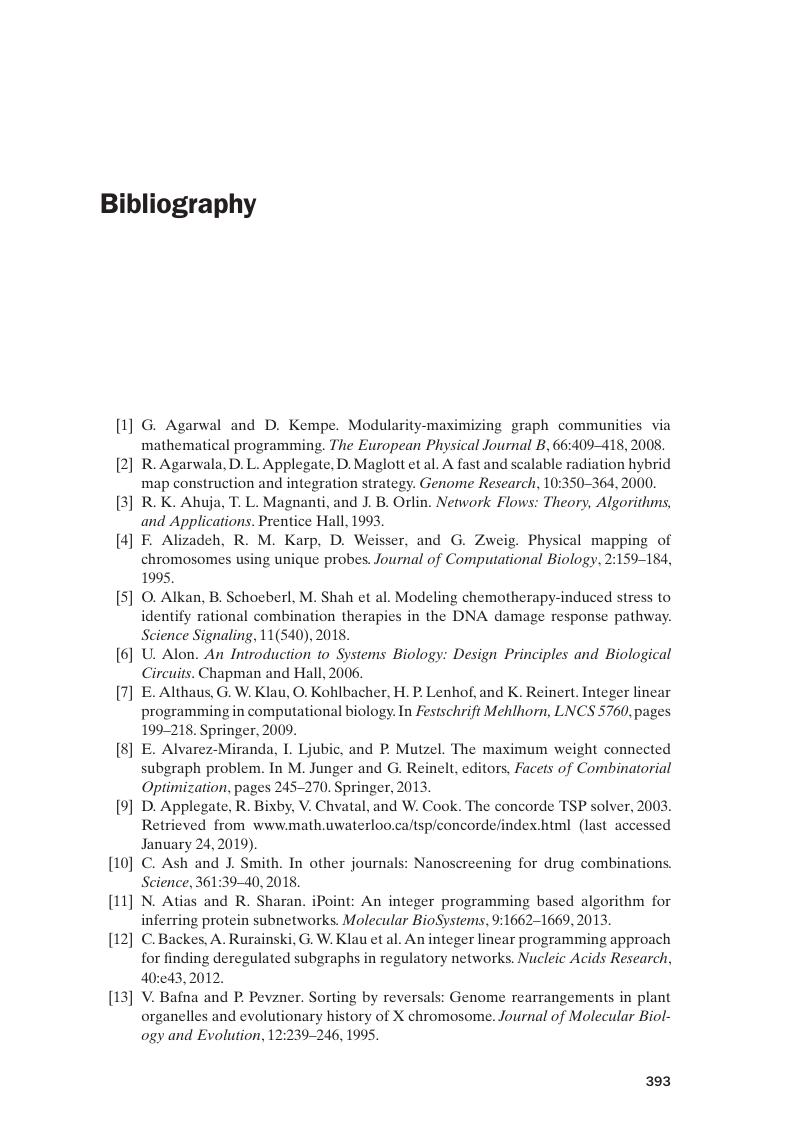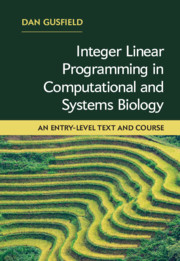Book contents
Bibliography
Published online by Cambridge University Press: 31 May 2019
Summary

Information
- Type
- Chapter
- Information
- Integer Linear Programming in Computational and Systems BiologyAn Entry-Level Text and Course, pp. 393 - 404Publisher: Cambridge University PressPrint publication year: 2019
